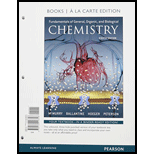
(a)
Interpretation:
The suitable elements should be identified for given electronic configuration.
Concept introduction:
The periodic table is given in figure 1,
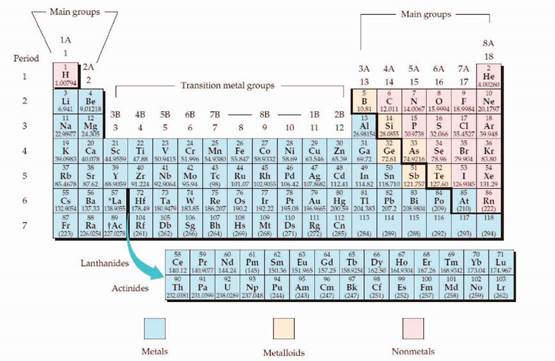
Figure 1
The electron configuration is the distribution of electrons of an atom or molecule in atomic or molecular orbitals. Atom consists of s, p, d, and f orbitals.
The Aufbau principle:
The Aufbau principle is states that in the ground state of an atom, electrons fill atomic orbitals of the lowest available energy levels before occupying higher levels. For example, the 1s shell is filled before the 2s subshell is occupied.
The subshell ordering by this rule is
(b)
Interpretation:
The suitable elements should be identified for given electronic configuration.
Concept introduction:
The periodic table is given in figure 1,
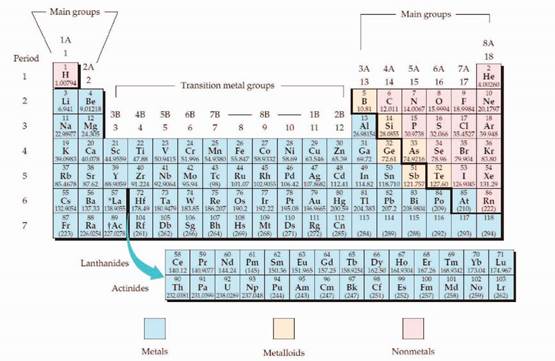
Figure 1
The electron configuration is the distribution of electrons of an atom or molecule in atomic or molecular orbitals. Atom consists of s, p, d, and f orbitals.
The Aufbau principle:
The Aufbau principle is states that in the ground state of an atom, electrons fill atomic orbitals of the lowest available energy levels before occupying higher levels. For example, the 1s shell is filled before the 2s subshell is occupied.
The subshell ordering by this rule is
(c)
Interpretation:
The suitable elements should be identified for given electronic configuration.
Concept introduction:
The periodic table is given in figure 1,
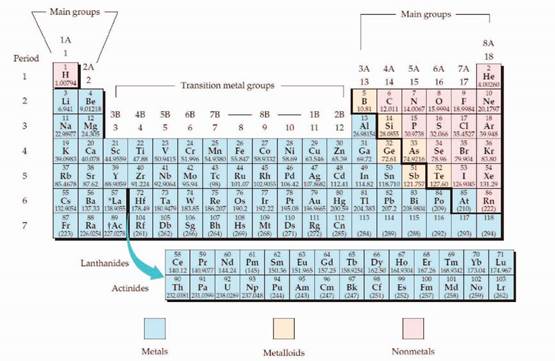
Figure 1
The electron configuration is the distribution of electrons of an atom or molecule in atomic or molecular orbitals. Atom consists of s, p, d, and f orbitals.
The Aufbau principle:
The Aufbau principle is states that in the ground state of an atom, electrons fill atomic orbitals of the lowest available energy levels before occupying higher levels. For example, the 1s shell is filled before the 2s subshell is occupied.
The subshell ordering by this rule is
(d)
Interpretation:
The suitable elements should be identified for given electronic configuration.
Concept introduction:
The periodic table is given in figure 1,
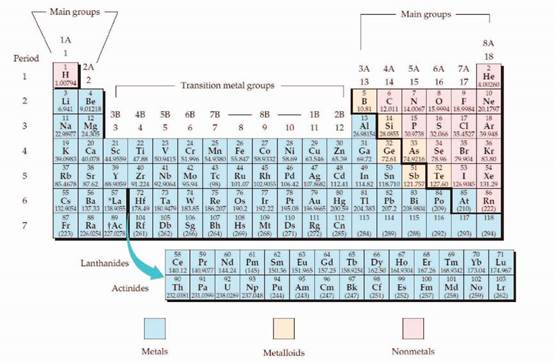
Figure 1
The electron configuration is the distribution of electrons of an atom or molecule in atomic or molecular orbitals. Atom consists of s, p, d, and f orbitals.
The Aufbau principle:
The Aufbau principle is states that in the ground state of an atom, electrons fill atomic orbitals of the lowest available energy levels before occupying higher levels. For example, the 1s shell is filled before the 2s subshell is occupied.
The subshell ordering by this rule is
Want to see the full answer?
Check out a sample textbook solution
Chapter 2 Solutions
Fundamentals of General, Organic, and Biological Chemistry, Books a la Carte Plus Mastering Chemistry with Pearson eText -- Access Card Package (8th Edition)
- Draw a structure for the compound, C3H5Br, that fits the following 1H NMR data: δ 2.32 (3H, singlet) δ 5.35 (1H, broad singlet) δ 5.54 (1H, broad singlet)arrow_forwardHow many peptide bonds were produced by creating the following How many H2O particle were produced by creating the following structure if the starting reagent is glucose? * structure if the starting reagent is glucose? * CH,OH CH,OH CH,OH CH;OH CH;OH CH;OH OH он он OH 250 ÓH OH OH ÓH OH OH 300 А.) 125 B.) 250 А.) 30 c.) 25 B.) 301 D.) 500 C.) 302 E.) O D.) 300 E.) 150 F.) Oarrow_forwardCompound P was discovered by a scientist. Compound P is a dipeptide, optically active and has the molecular formula C„H14N2O3. Compound P is formed when compound Q and compound R joined together by condensation reaction. While, monomers S and T are formed by modifying the compounds Q and R. Polymer U is formed by the condensation reaction of monomers S and T. Draw the possible structural formulae of compounds P, Q, R, S, T and U. Label the peptide bond(s) for compound P. Draw the possible structural formulae for repeating unit of polymer U. Please state the number of functional groups present in compound P.arrow_forward
- Some different views of an octahedral symmetry metal complex 1 1 3 6. 2 1 4 View down a C, axis View down a C, axis View down a C,axis E 8C, 6C, 6C, 3C, i On i 6S, 85, 30, 604 A1g 1 1 1 1 1 1 1 1 1 -1 -1 1 Az8 1 1 -1 -1 1 Eg 2 z², x² - y? -1 0. -1 -1 -1 1 -1 -1 (xy, xz, yz) T2g -1 -1 1 1 -1 -1 A1u 1 1 1 -1 -1 -1 -1 A2u 1 -1 -1 1 -1 -1 -1 1 E -2 1 -2 -1 2 (x, y, z) -1 1 -1 -3 -1 1 3 T2u 1 -1 -1 -3 1 -1 The octahedral character table above may be useful for the following questions. 1. 1. 3. 3. 1. 2. 3. 1. 2)arrow_forwardUsing the generic structure shown, indicate what the substituents are for the structure of finerenone (R1, R2, R3, for Ar indicate R6, R8, R9, R10, for D indicate R4). R1 R2 R3 = For Ar: R6 R8 = R9 = R10 = For D: R4= Finerenone: H₂N HC Generic formula: H₂N 230 R+ 'R'. R$ ofarrow_forwardIn which of the following pairs is the first element expected to have a higher electronegativity than the second? (1 Point) O O, P O Cs, Rb O I, Br Al, Parrow_forward
- 1) Explain how g orbitals are different from s, p, d, and f atomic orbitals? - determine the number of g orbitals that will exist in a given energy level? - include a set of quantum numbers (n, l, and ml) for one of the g orbitals in the lowest energy set of g orbitals? 2) TlF3 forms a stable compound, while the similar compounds TlCl3 and TlBr3 are unstable and undergo disproportionation. Explain why the fluoro compound is more stable than the chloro and boromo compounds?arrow_forwardConsider the following Newman projection: CH3 Br CH3 Br Br What word or two-word phrase describes this conformation? How many Br atoms are eclipsed by the CH3 group on the front carbon? How many CH3 groups are gauche to the CH3 group on the front carbon? How many Br atoms are anti to the CH3 group on the front carbon? ☐ ☐ ☐arrow_forwardDraw the structure of the product that forms when the carbonyl compound shown is treated with K₂ Cг2 О7. If no reaction occurs, draw the structure of the organic starting material (reactant). CH3(CH2), (CO)CH (CH3)2 Click and drag to start drawing a structure. : ☐arrow_forward
 BiochemistryBiochemistryISBN:9781319114671Author:Lubert Stryer, Jeremy M. Berg, John L. Tymoczko, Gregory J. Gatto Jr.Publisher:W. H. Freeman
BiochemistryBiochemistryISBN:9781319114671Author:Lubert Stryer, Jeremy M. Berg, John L. Tymoczko, Gregory J. Gatto Jr.Publisher:W. H. Freeman Lehninger Principles of BiochemistryBiochemistryISBN:9781464126116Author:David L. Nelson, Michael M. CoxPublisher:W. H. Freeman
Lehninger Principles of BiochemistryBiochemistryISBN:9781464126116Author:David L. Nelson, Michael M. CoxPublisher:W. H. Freeman Fundamentals of Biochemistry: Life at the Molecul...BiochemistryISBN:9781118918401Author:Donald Voet, Judith G. Voet, Charlotte W. PrattPublisher:WILEY
Fundamentals of Biochemistry: Life at the Molecul...BiochemistryISBN:9781118918401Author:Donald Voet, Judith G. Voet, Charlotte W. PrattPublisher:WILEY BiochemistryBiochemistryISBN:9781305961135Author:Mary K. Campbell, Shawn O. Farrell, Owen M. McDougalPublisher:Cengage Learning
BiochemistryBiochemistryISBN:9781305961135Author:Mary K. Campbell, Shawn O. Farrell, Owen M. McDougalPublisher:Cengage Learning BiochemistryBiochemistryISBN:9781305577206Author:Reginald H. Garrett, Charles M. GrishamPublisher:Cengage Learning
BiochemistryBiochemistryISBN:9781305577206Author:Reginald H. Garrett, Charles M. GrishamPublisher:Cengage Learning Fundamentals of General, Organic, and Biological ...BiochemistryISBN:9780134015187Author:John E. McMurry, David S. Ballantine, Carl A. Hoeger, Virginia E. PetersonPublisher:PEARSON
Fundamentals of General, Organic, and Biological ...BiochemistryISBN:9780134015187Author:John E. McMurry, David S. Ballantine, Carl A. Hoeger, Virginia E. PetersonPublisher:PEARSON





